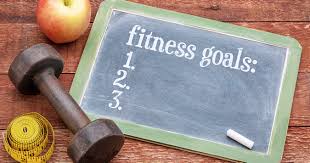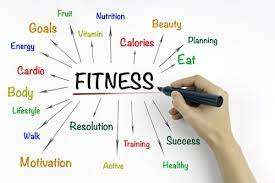Starting any fitness journey can be daunting.
You might be excited to finally get active, but setting enormous goals right away can lead to burnout, frustration, or even giving up altogether.
Enter small, achievable fitness goals—simple, attainable steps that pave the way for sustainable change and confidence boosts along the way.
In this article, I will discuss why setting small goals is essential, explore how to define your own fitness mini-goals, and share real-life examples to show how small changes add up over time.
Article Index:
- Why Small Fitness Goals Work Better than Big Ones
- How to Define Your Fitness Mini Goals
- Setting Up Your Daily Mini Goals
- Tracking Progress and Staying Consistent
- Real-Life Examples of Mini Goals for Fitness
- Conclusion: Making Fitness Goals Work for You
Why Small Fitness Goals Work Better than Big Ones?
It is easy to think that aiming big is the fastest route to success, but research tells a different story.
Studies show that starting with small, realistic goals increases the likelihood of long-term success.
In fact, a study in the Journal of Health Psychology found that people who set modest goals were more likely to stick with them and maintain a healthy lifestyle than those with larger, daunting objectives.
Small goals have a psychological edge. When you achieve a mini-goal, your brain releases dopamine, the “feel-good” neurotransmitter. This reward loop encourages you to keep moving forward, as opposed to getting discouraged by a distant goal.
The American Council on Exercise (ACE) emphasizes that setting small, attainable targets makes fitness less overwhelming, fostering a positive mindset and gradual habit formation.

How to Define Your Fitness Mini Goals?
Start by breaking down your ultimate goal into smaller parts.
If your big goal is to run a 5K, your mini goals might look like this:
- Week 1: Walk briskly for 10 minutes, three times a week.
- Week 2: Add 5 minutes of jogging to each session.
- Week 3: Increase jogging time to 10 minutes.
By defining mini-goals this way, you’ll have realistic targets and avoid burning out.
Each mini-goal should be SMART—Specific, Measurable, Achievable, Relevant, and Time-bound.
For example, if your long-term goal is weight loss, start with a small daily fitness goal, like doing 10 push-ups a day.
Small goals are like stepping stones; each one takes you closer to where you want to be without overwhelming you.
Setting Up Your Daily Mini Goals
Daily mini-goals are effective because they help create a routine.
According to The European Journal of Social Psychology, habits take an average of 66 days to become automatic.
Incorporating small fitness goals each day, like 15 minutes of stretching or a daily 5-minute plank, can gradually turn exercise into a daily habit.
Here are some examples of small daily fitness goals:
- 5-Minute Morning Stretch: This goal is easy to achieve and sets a positive tone for the day.
- 10-Minute Evening Walk: Walking at the end of the day clears your mind and gets you moving without heavy exertion.
- Standing Up Every Hour: If you are in a sedentary job, this small goal helps reduce long periods of sitting and contributes to overall wellness.
When choosing mini-goals for fitness, focus on ones that fit easily into your daily routine and do not require too much planning.
The beauty of these mini goals in exercise is their simplicity; you do not need a gym or specialized equipment to get started.
Tracking Progress and Staying Consistent
Consistency is the backbone of any successful fitness plan.
Tracking your progress makes you more aware of your achievements and areas that need improvement.
A study in the Journal of Medical Internet Research found that participants who tracked their exercise and diet consistently experienced better results than those who did not.
Fitness tracking can be as simple as a daily checklist, a fitness app, or a journal where you jot down completed goals. Moreover, never neglect your night sleep if you want to get fit.
By tracking small wins, you will see how each mini-goal contributes to your larger goals.
Let’s say your mini-goal was to drink eight glasses of water daily for a week.
At the end of the week, checking off that accomplishment can give you the motivation to add a new goal, like increasing your step count or reducing processed foods.
Real-Life Examples of Mini Goals for Fitness
Here are 3 examples of individuals who benefitted by opting for small terms fitness goals that were achievable in nature:
Sarah’s Journey to Weight Loss:
Sarah wanted to lose 30 pounds but struggled with consistency. Instead of focusing on her big goal, she set mini fitness goals like cutting sugary drinks and walking 15 minutes each day.
Over six months, Sarah gradually increased her walking time and added strength training twice a week. She also drank home made detox smoothies to burn her belly fat via healthy food intake.
By focusing on one small change at a time, Sarah lost weight steadily and, more importantly, developed sustainable habits.
John’s Path to Better Endurance:
John, a busy professional, wanted to improve his endurance. He started with a small daily fitness goal of jogging for 5 minutes each morning.
After two weeks, he increased his time to 10 minutes and eventually moved on to running 20 minutes three times a week. By setting mini-goals, John increased his stamina without drastic lifestyle changes.
Michelle’s Flexibility and Mobility Focus:
Michelle had tight muscles and wanted to improve her flexibility. She began with a daily 5-minute stretching session focusing on her hamstrings and lower back.
After consistently meeting her small daily fitness goal, Michelle added stretches for her upper body and core. Within months, her flexibility improved significantly, and she felt less tension in her body.
These real-life examples show how small, achievable fitness goals can lead to big changes. Each person took a gradual approach, building up to more challenging activities as they progressed.

Making Fitness Goals Work for You
Setting small, achievable fitness goals is about creating a positive, sustainable approach to fitness.
When you start small, you give yourself the chance to build momentum, develop habits, and gain confidence with each success.
As you achieve each mini goal, you will feel more prepared to tackle the next, all while developing a routine that feels manageable and rewarding.
Remember, consistency is key. Start with goals you know you can achieve, like a daily walk or a 10-minute stretch.
Over time, you can increase the intensity or add new goals. Keep track of your progress and celebrate each small victory along the way.
By making fitness goals achievable and realistic, you will be setting yourself up for success in the long run.
After all, fitness is a journey, and every step counts—no matter how small.
References: